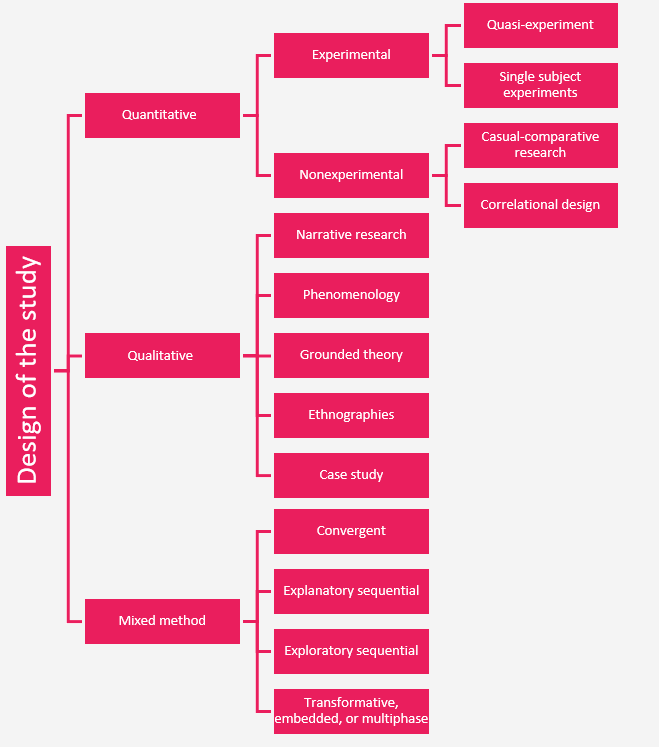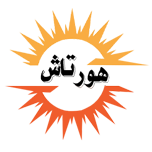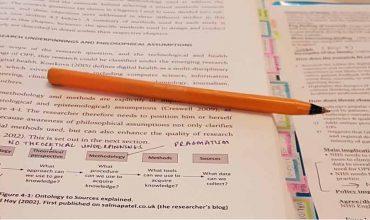In previous posts, we discussed writing chapter one and writing chapter two. In this post, we will see how to write chapter 3 of a quantitative thesis.
As the name implies, in chapter 3 of a thesis or dissertation, you need to write about the methods you have used in order to conduct the research and evaluate the variables. Unlike chapters 1 and 2, there are slight differences between writing chapter 3 for qualitative and quantitative researches.
Before everything else, by methodology, we mean the way you choose to find out answers to the research questions. These ways are called techniques and are specified. The only thing you need to do is to choose the most appropriate technique considering your research philosophy. Then, in chapter five of thesis or in methodology chapter explain it in detail and clarify how you designed your research.
The subsections of chapter 3 of a quantitative research includes:
3.1 Introduction
3.2 Participants
3.3 Instrumentation / Instruments
3.4 Design of the study
3.5 Data collection procedure
3.6 Data analysis procedure
3.7 Variables (optional)
3.8 Materials and instruments (optional)
3.9 The research site (not in all researches)
Pay attention that different universities have different forms for writing each chapter, however, they are not major differences. Probably the position of information differs but the main content does not differ.
Now we are going to introduce and explain each of the subsections one by one:
3.1 Introduction
As you may understand till now, each chapter begins with an introduction which is explaining what is going to be discussed in the chapter. Because of such content, the introduction part in each chapter will be written when the whole chapter is written.
In the introduction of chapter 3 of a quantitative thesis, firstly, remind the readers about the research questions and hypotheses, the problem or gap, and the purpose of the study. Secondly, relate them to subsections of chapter 3. Give the readers a brief look over what they are going to read e.g. write about the questionnaires, number of the questions, validity, reliability of each questionnaire, and so on, in brief.
Avoid repeating the exact phrases of research questions, hypotheses, etc. rephrase them and note that it is to be a reminder.
3.2 Participants
Explain who your participants are, as specific as you can. For example, you may include the number of samples, the method of choosing them, and so on.
3.3 Instrumentation / Instruments
In research, the variables should be evaluated; the question is
In each subsection write about the instrument you used to evaluate the variable. At first, prove that the chosen instrument is valid and reliable for your research, then explain about the instrument itself, in details. Explain things like how does it work, how the results are interpreting, what parts make it, and so on.
If the instrument you used is a
3.4 Design of the study
As we said in “qualitative vs. quantitative research” a study could be of a qualitative, quantitative, or a mixed method design. The design of a study depends on the type of research.
After defining the design of the study, many other components of the research will be clarified, such as the type of instruments can be used in the study, the kinds of variables and research questions, the way the data should be analyzed and many other things. So it is very important to define the design of the study, it is a base for the research.
In “Research Design” book by “Creswell” you can find more detailed information on this part.

In this section, you need to explain the reasons for choosing the “experimental design” and why not “non-experimental design” (or vice versa).
then specify what kind of experimental/ non-experimental design you will use and – like other parts of this chapter – explain the reasons for your choice with regard to the goal of the study.
3.5 Data collection procedure
Ones may decide to replicate your research, so s/he will need the procedure of the study. Hence you need to explain how you collected the data in details. For example, where you collected the data, how you did it, what your data was, how you chose it, and so on.
3.6 Data analysis procedure
By data analysis procedure we mean the statistical test you have used to analyze the data, such as ANOVA, T-test, etc.
3.7 Variables
This part is optional. You may write the variables of the study and their types in this part.
3.8 Materials and instruments
This is optional too. If you have used a specific instrument or material in the research, it can be mentioned in this part. Note that it differs from the Instruments part in section 3.3. and refers to specific instruments or details.
3.9 The research site
In some researches, you need to mention the city where the study has been conducted.
Some other considerations
Note that these parts may differ in different universities, but the main idea does not change.
In some fields, such as pure science, or in some certain types of study like surveys these parts would be different.
In those kinds of majors which may not be empirical, the researcher just needs to discuss the study’s variables separately, in chapter 3. More details depend on your research and major. For example, you may write on a theory, so in chapter 3 you need to prove the accuracy of it.





